Retaining walls with respect to their form and construction method can be grouped into three categories vis a vis: gravity, embedded and hybrid. This is discussed in this article.
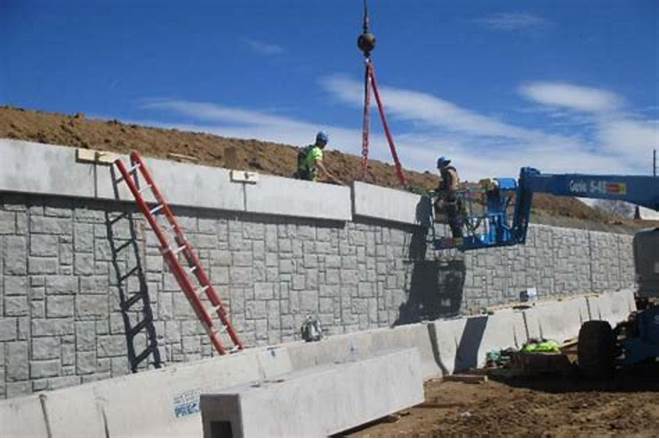
Retaining walls are structures designed and constructed to resist the lateral forces from soil whenever there is a desired change in ground elevation, exceeding the natural angle of repose of the soil. In other words, retaining walls are used to bound soils between two elevations, often in areas of terrain possessing undesirable slopes or in areas where the landscape needs to be shaped severely and engineered for more specific purposes like hillside farming or roadway viaducts.
Historically, the idea of retaining walls date back to ancient Egypt, where they were used to harness the great power of the Nile river3. The Egyptians constructed the Gabion style retaining wall, owing to the need to divert the flow of water from the Nile into reservoirs and into the fields for farming purposes. While there have being innovations in materials and construction methods, retaining walls and its applications have largely remained the same, i.e. preventing soil erosion, creating space and diverting water.
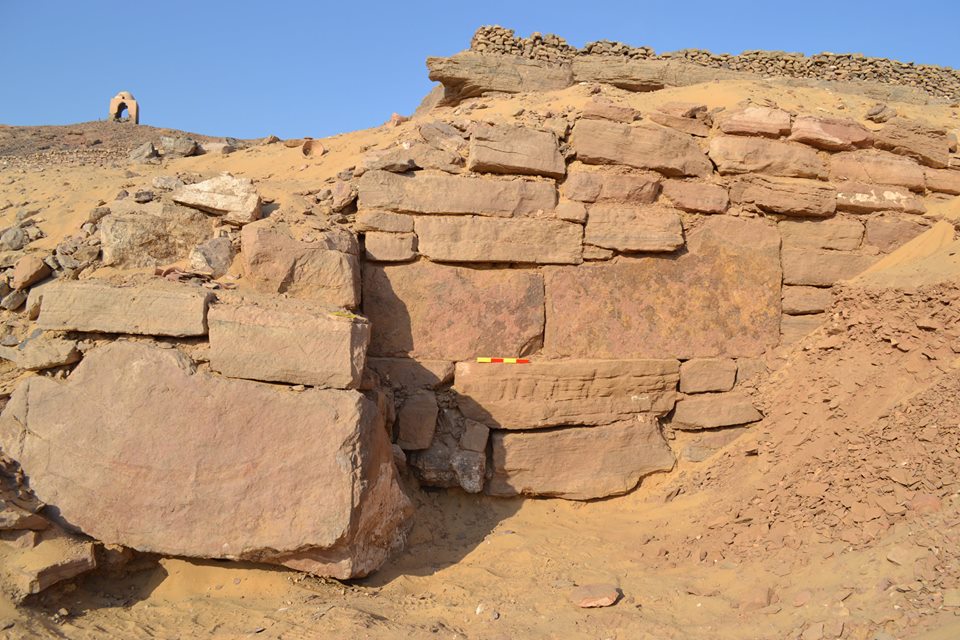
Today, there are several forms of retaining walls with respect to their form and construction methods. These can be grouped into three categories vis a vis: gravity, embedded and hybrid, these would be expatiated in the following sections.
Gravity Retaining Walls
Gravity retaining walls are the most basic type of retaining walls encountered in practice. This type of retaining walls relies upon its self-weight in addition to the friction generated between the wall footing and the bearing soil to ensure stability. Gravity walls are typically employed when the depth of excavation to be retained is relatively shallow. They can be constructed from a bunch of materials namely, masonry, concrete and even reinforced soil, all of which follows the underlying principle – supporting the lateral forces and resistance to sliding and overturning by virtue of the walls own-weight.
Most gravity walls are often constructed using the back-fill method – a method whereby the wall is first constructed and then the soil it is to retain is placed against it. Masonry retaining walls can be subdivided into at least four sub-categories, as would be explained in the following sections.
Masonry Retaining Walls
Masonry retaining walls, just as the name implies are constructed from masonry. This include clay bricks, sandcrete, concrete blocks and even stacked stones (figure 2). Masonry retaining walls are used for very shallow depth of excavation, typically in the range of 0.5-2.5m. They are typically founded on mass concrete strip footing and must be provided with vertical movement joint at every 10-15mto cater for thermal expansion and contraction effects1.
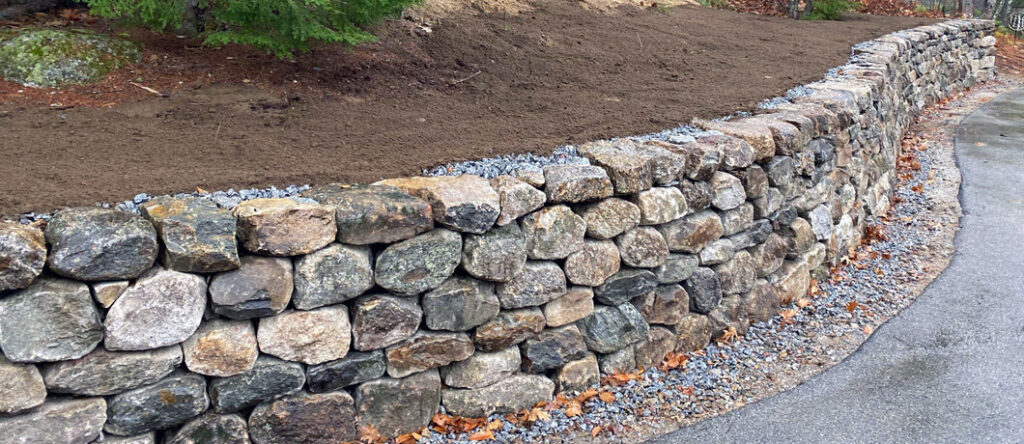
Dry Masonry Retaining Walls
Dry masonry walls are constructed by stacking masonry unit on each other but doing so without the use of any mortar or cement material. The masonry units are being held together primarily by the force of gravity and a formed protrusion in the soffits of the masonry units, that ensures that the units are effectively locked into place (figure 3).
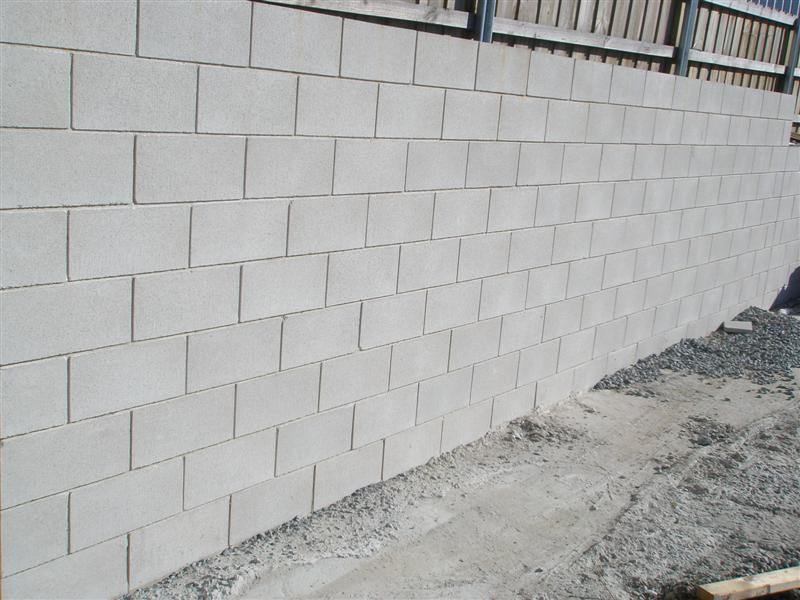
They are also typically used for very shallow depth excavations and cast on mass concrete strip footing.
Gabion Retaining Walls
The gabion retaining walls are very similar to dry masonry retaining walls because they are formed from modular units that are not bonded together with any binder. However, in gabion retaining walls, the modular units are made up steel cages, each of which is filled with stones or rocks (figure 4). Due to their flexibility, they are often used on sites with relatively poor ground conditions, particularly sites susceptible to the effects of subsidence. Gabion retaining walls are free draining, hence where passage of water through a retaining wall is a requirement they could be a very viable solution.
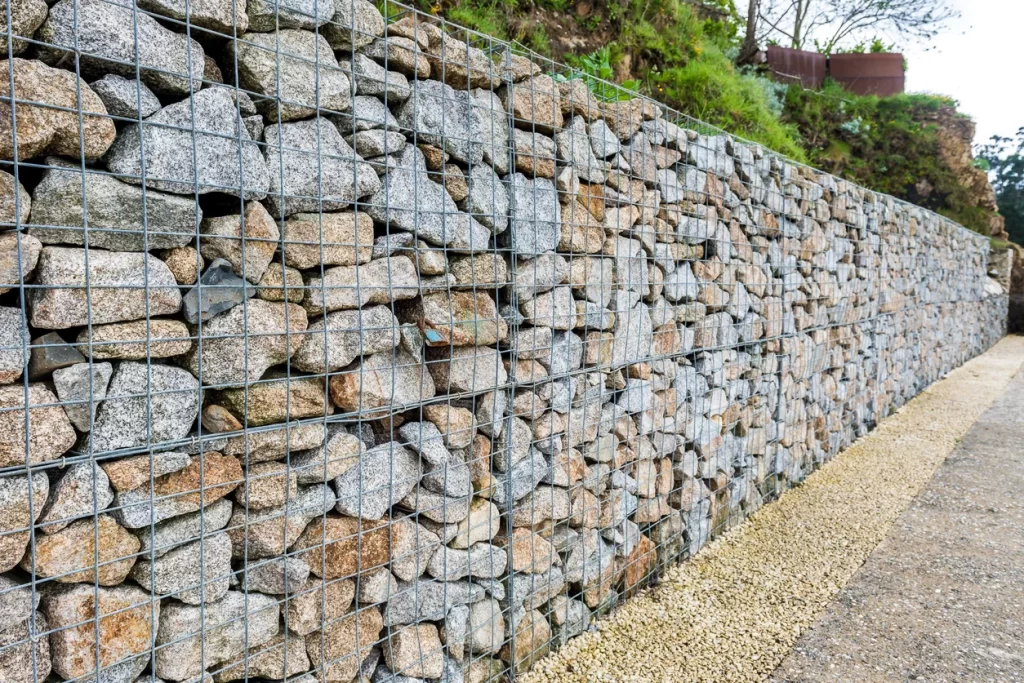
See: Designing a Gabion Wall | Worked Example
Crib Retaining Walls
Crib retaining walls are constructed using a similar procedure as the gabion retaining walls. Except that, a crib retaining wall instead consist of series of struts made from either concrete, timber or any other material, bound together to form a cage (figure 5). The cage is then filled with either a fill material or mass concrete to form the retaining wall. They are usually placed at an angle and filled in layers depending on the retained height. Where the wall is required to be free draining, the cages are often filled with sand or rocks. Even where it is filled with concrete, it could still be free draining, by creating a barrier behind the wall using granular material.
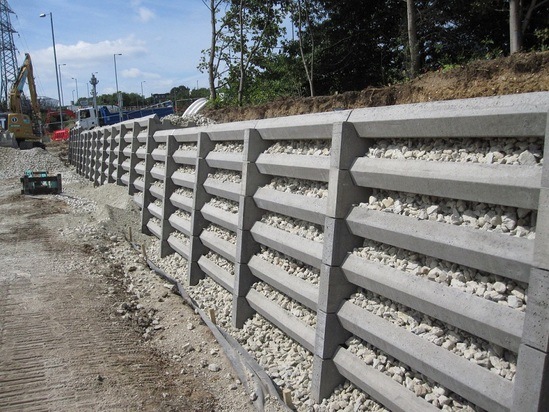
Reinforced Soil Retaining Walls
The concept of reinforced soil retaining wall is very rooted in the concept of geo-synthetics. The basis is to allow the retained soil to act as retaining wall by supporting itself. This entails strengthening a soil mass by increasing its angle of repose. This is usually done by placing a form of reinforcement material that is in form of a mesh in layers in the soil (figure 6). This reinforcement material must have high tensile stiffness in order to enhance the soil’s shear and tensile capacity. These meshes are either synthetic polymer or steel fabric.
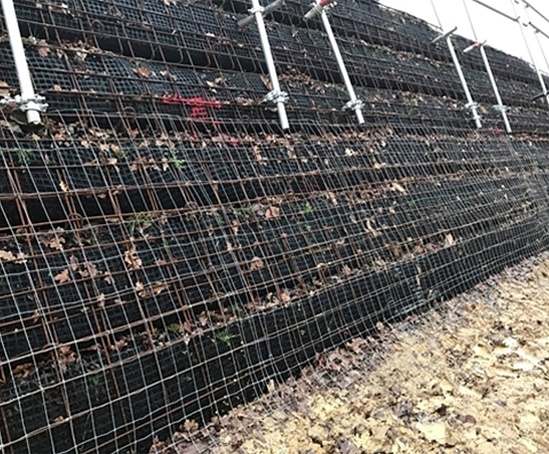
Embedded Retaining Walls
In sharp contrast to gravity retaining walls, embedded retaining walls are constructed through a process that is exactly opposite to the former. Embedded retaining walls are constructed by installation into the ground up to a depth that is below the depth of excavation. Once the wall is in position, soil is excavated from the wall’s front face to specified depth. Embedded retaining walls rely on the passive pressure generated in the front face and the shear and bending capacity generated by the wall itself to remain stable. They are very suitable for very deep excavation in excess of 10m, and since they require no prior excavation before installation, they’re very suitable for restricted sites. They are typically used for most temporary works, caisson foundations, bridge pier construction as well as many permanent installations.
A key differentiator between embedded retaining walls and gravity retaining walls is that the former always require special equipment to construct, thus tools certainly adds to the cost of construction. While this might seem to be a disadvantage, the amount of material required to construct embedded walls is relatively lower and the speed of construction typically greater. Also, they can retain relatively larger volume of earth.
Embedded retaining walls also exists in different forms, this is expounded in the following sub-sections.
Sheet Pile Retaining Walls
Sheet piles (figure 7) are the most basic types of embedded retaining walls. They are made from profiled steel sheets connected together via an interlock that runs along the edge of each sheet. The profiled steel sheets during construction are driven into the ground via the use of a mechanical hammer.
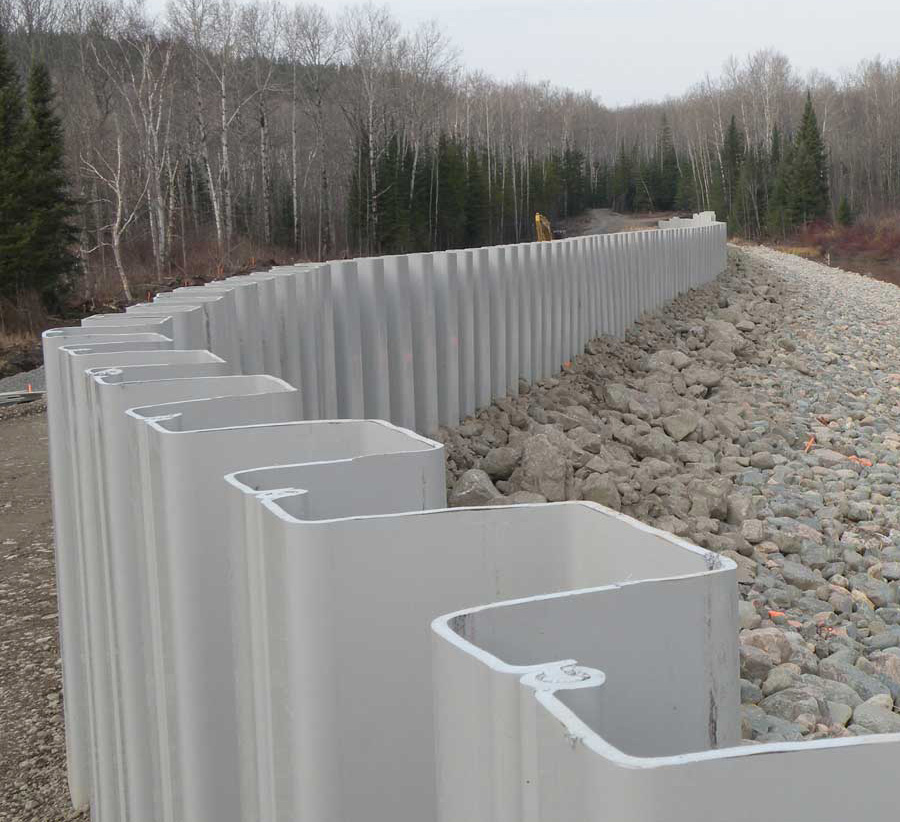
Sheet piles are generally used to retain clay, sand and silt soils with mostly no hard inclusion such as boulders or existing substructures.
Contiguous Bored Piled Retaining Walls
Contiguous bored piles walls are made of pile elements referred to as ‘contigs,’ dug and cast into the ground with a small gap of 50-150mm between each pile (figure 8). This category of embedded retaining wall is only suitable for retaining non-granular materials. Granular soils such as sand and gravel tend to fall through the gaps between the piles. In the same vein, they cannot retain water, thus they are only utilized in places where the water table is below the retained height.
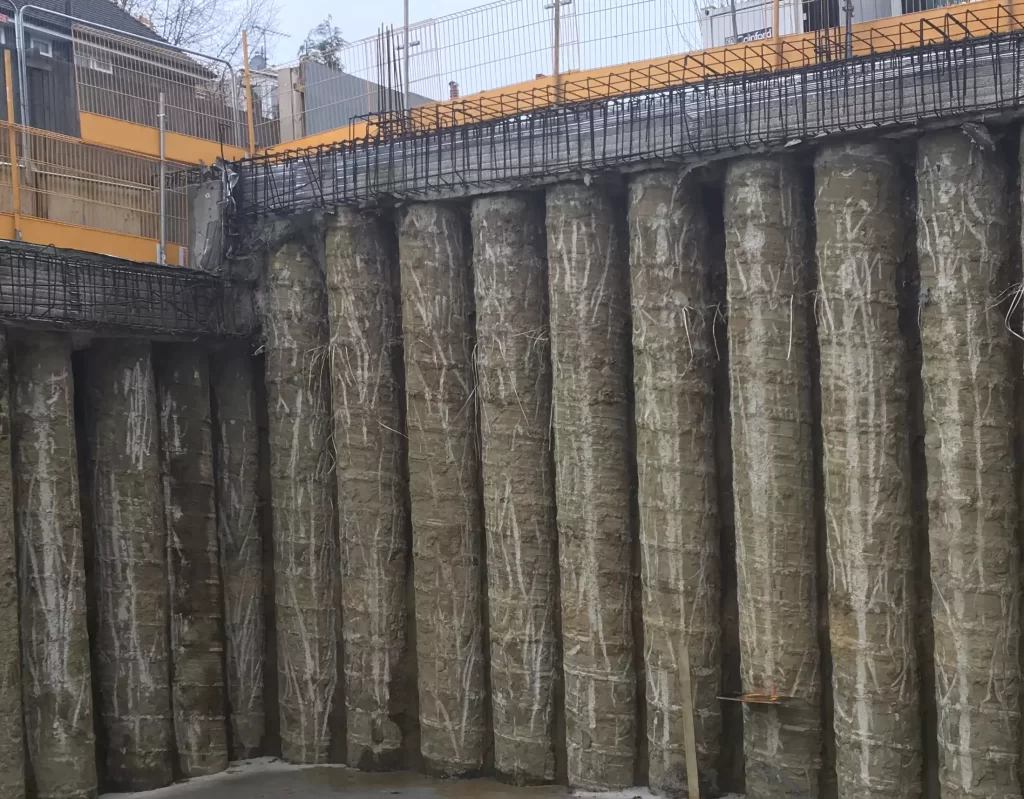
Secant Bored Piled Retaining Walls
The secant bored piled wall is an extension of the contiguous piled wall, with the only exception being the absence of the gaps between the piles. Here the piles are divided into primary and secondary (figure 9). The primary piles are installed first with the secondary piles overlapping the first. What this does is create a wall that is capable of resisting water penetration.
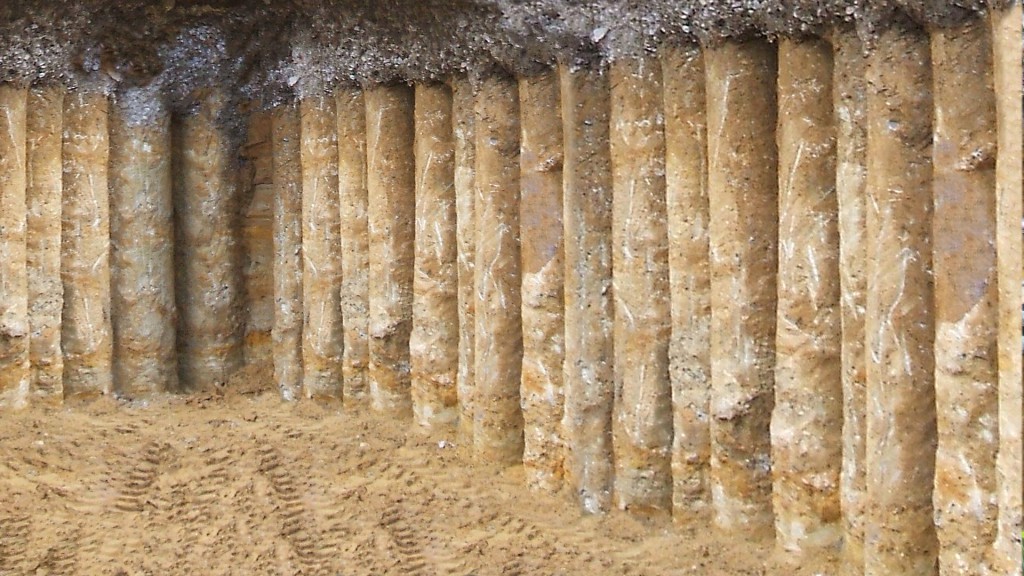
In contrast to the contigs, secant bored piled walls can be installed into almost any soil and can be placed even where there is a high-water table.
King-post Piled Retaining Walls
King post piled retaining walls, also known as soldier walls consist of a series of steel posts that are either driven into the ground or cast in place into an excavated hole (figure 10). The posts are typically spaced in the range of 1-3m apart and the gap formed between them filled with spanning panels which are generally made up of precast elements.
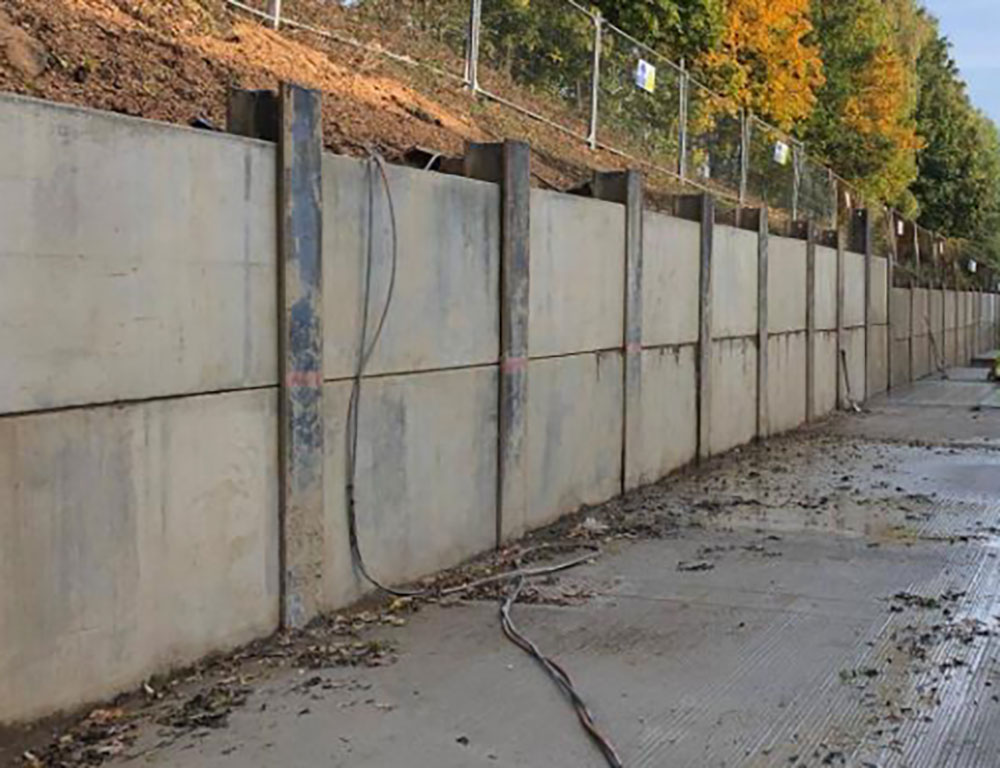
They are typically used to retain clay and granular soils and where the water table is below the required retained height.
Diaphragm Retaining Walls
Diaphragm walls (figure 11) are formed by excavating a segment of soil and replacing it with a fluid, after which a reinforcement cage is erected in the excavation and concrete poured in. As the concrete is poured into the excavation, the concrete displaces the liquid. Diaphragm walls are at the pinnacle of retaining walls construction, by virtue of being able to retain significantly more soil than any other retaining wall type. They can be up to 1500mm thick and can retain soil up to a depth of 120m.
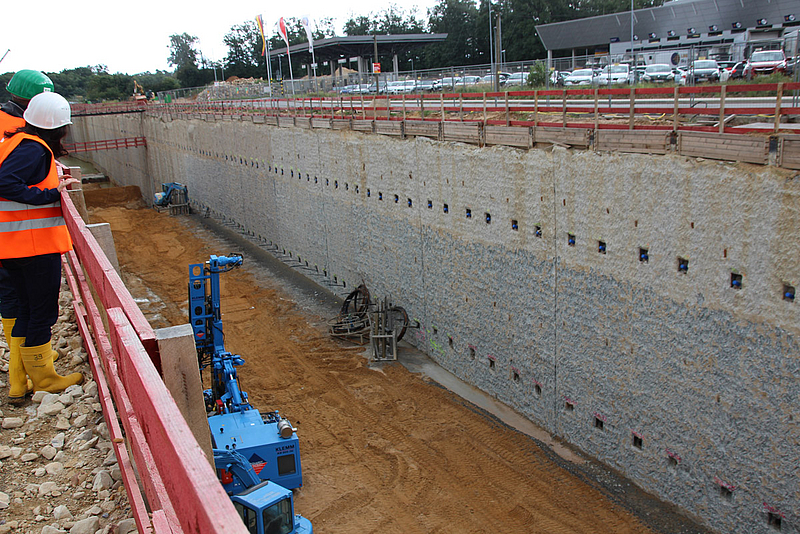
Diaphragm walls can be installed into almost all soil types irrespective of the position of the water table. They are able to retain water pressures provided water bar seals are installed across each segment of the diaphragms.
Hybrid Retaining Walls
Hybrid retaining walls combine the properties of both gravity and embedded retaining wall. Here, the stability of the wall is being ensured via the combination of the wall weight and the shear and bending resistance generated by the wall and its base.. Hybrid retaining walls are typically used where ground levels need to be raised, perhaps where the soils conditions are so poor that a gravity retaining wall solution is unviable.
Examples of hybrid retaining walls include, the typical cantilever, counterfort and buttress retaining walls. Hybrid retaining walls can be installed in most soils and are able retain water pressures provided appropriate drainage and water proofing measures have being considered.
See: Structural Analysis of Retaining Walls
Basis of Retaining Wall Selection
Several factors influence the selection of a retaining wall form. This would normally vary between site constraints, space restrictions, soil conditions, type of material to be retained and the retaining height. Of all afore-listed factors, the retaining height is often considered to be the most significant factor, because it’s a direct pointer to the magnitude of lateral forces the retaining wall is expected to resist. Space restrictions and site constraints are equally important factors as they would impact significantly on construction methodology, in some instances, such that certain wall types can become unviable.
Take a 2m high retaining wall for instance, to be constructed adjacent to a highway. What is more likely? This wall is constructed as a gravity or embedded wall? Aside the small retaining height, restrictions are unlikely to be a concern for a wall constructed adjacent to a highway, hence a gravity wall is favoured. However, for a 4m deep basement construction within a city centre, an embedded retaining wall becomes more viable due to more retaining height required coupled with the higher likelihood of limited access.
Other considerations would include the stiffness of the wall and materials. Retaining walls must be sufficiently stable such that they do not fail either through overturning or sliding throughout the design life. Water proofing is another factor. Where the retaining wall is being utilized for basement construction, for instance, the choice of selection must be ensured to have the required water resistance. All of these impacts on the cost and programme hence must be adequately considered.
Also See: Designing a Counterfort Retaining Wall | Worked Example
Sources & Citations
- Brookes H. (2008) Basics of Retaining Walls Design, HBA Publications, USA 8ed.
- Retaining Wall Construction (2013): The Structural /Engineer, Technical Guidance Notes (Level 2) available at www.IstructE.com (Accessed: Sept 2022).